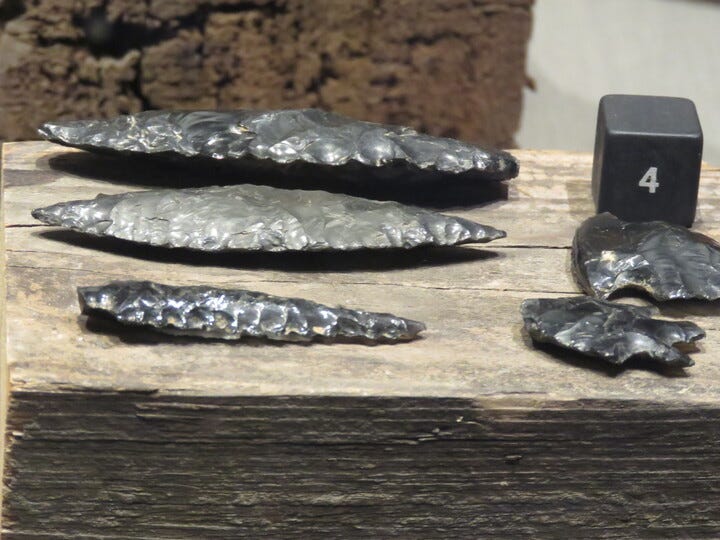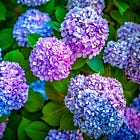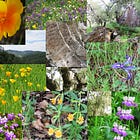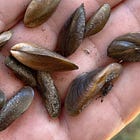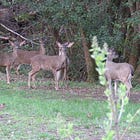Green Wednesday: Exploring Napa’s Volcanic Past / Turning Trees Into Treasures
By Kathleen Scavone, Environmental Contributor / Aileen Carroll, UC Master Gardener of Napa County
Green Wednesday: Gardening and Ecological Insights
Every Wednesday Napa Valley Features brings you Green Wednesday, featuring articles from environmental voices and the UC Master Gardeners of Napa County. These contributors share research-based horticultural advice and insights on sustainability and climate topics relevant to our region.

Summary of Today’s Stories
"Napa Obsidian Past and Present:” Traces the geologic and cultural significance of Napa Valley's obsidian, revealing how this volcanic glass links the region’s ancient volcanic history to Indigenous craftsmanship and archaeological science.
"Napa obsidian was highly prized, and it was traded throughout Central California." — Kathleen Scavone
"Turn Your Town Into a Scavenger Hunt for Trees:” Encourages readers to discover tree health, biology and local ecology through a fun and educational scavenger hunt around Napa’s streetscapes.
"Napa Valley’s trees are not just beautiful. They’re alive with stories, clues and fascinating details waiting to be discovered." — Aileen Carroll
Napa Obsidian Past and Present
By Kathleen Scavone
NAPA VALLEY, Calif. — Napa Valley's many gems include wineries, bakeries and restaurants, but those aren't the only nooks and crannies containing surprises.
As you gaze out across the valley, the geography's substantial personality invites inquiry. First there's the soft valley floor cradling the Napa River. The valley's western region is made up of the Mayacamas Mountains with formations of marine sedimentary rocks more than 150 million years old, known as the Franciscan and Great Valley complexes. Fix your eyes to the east and you’ll see the Vaca Mountains, made up of lavas of the Sonoma Volcanics, younger than 5 million years. Within the array of soils created by volcanic and marine origins that are the basis of many a fine wine, a shiny, glass-like rock called obsidian can be seen near the town of St. Helena at Glass Mountain.
Obsidian is a type of extrusive igneous rock, and natural formations of the rock can be found worldwide where there is volcanic activity. Napa Valley's Glass Mountain is a perfect example of obsidian that was created in nature because of crystal-free magma that made its way to Earth's surface, then solidified. This natural glass is also called volcanic glass and is black and shiny as well as very sharp. Tuff is another igneous rock found in the area which was created when pyroclastic materials were ejected from a volcano.
Obsidian is not considered a true mineral but is sometimes called a mineraloid due to its formation as glass and not crystalline. Obsidian in many forms can be found around the world where specific kinds of volcanic eruptions have occurred, such as those in Australia, Canada, Italy, Argentina and elsewhere. Usually, it’s black to gray in color, but sometimes obsidian is found in red to red-brown colors.
"Obsidian, volcanic glass, forms when a lava that is generally high in silica chills quickly and not explosively,” said Dean Enderlin, former geologist for Homestake Mine (now McLaughlin Natural Reserve) in Lake and Napa counties. “If the eruption is explosive, which is common for high-silica lavas, the most common deposit is pumice (frothy obsidian). It’s quite common to see both obsidian flows and pumice layers interbedded, as can be seen very well at Borax Lake in Lake County. Volcanic glass is chemically unstable at the surface of the Earth and will gradually revert to stable minerals. Geothermal heat sometimes accelerates the process. Obsidian reacts with water to slowly form other minerals, such as clays. Hydration occurs from the outside of a piece of volcanic rock, progressing inward at a generally measurable rate. The thicker the ‘hydration rind,’ the longer the once fresh glassy surface has had time to react with the elements. That’s why archeologists use a technique called obsidian hydration dating to estimate the age of a worked piece. The thicker the rind, the older the piece. The process is not exact, but it’s a useful estimator of age."
Enderlin continued, "When our volcanoes were active, there was far more obsidian and pumice present in our region than we see today. Over the course of hundreds of thousands of years, much of it has already weathered to clay. Even the deposits that survived are reduced from their original size and usually associated with clayey soil."
Archaeological sites on the east side of the Napa River and one on the west side date back over 12,000 years, according to retired California State Parks archaeologist Breck Parkman. He said most of the Napa Valley was the territory of the Wappo tribe and the Pomo people bordered them on the northwest, while the Patwin lived in the southeast.
"Napa obsidian was highly prized, and it was traded throughout Central California," Parkman said.
The four main quarry sites used by Indigenous people for toolmaking were Borax and Konocti Lakes in Lake County, Glass Mountain in Napa County and Annadel in Sonoma County, according to Enderlin.
"Obsidian was quarried elsewhere in California, but these are the local quarries,” Enderlin said. “Volcanic glass is actually very common in both the Sonoma and Clear Lake Volcanics, however, because it is chemically unstable, and much of it in our area has reverted to more stable minerals (particularly clay). Pumice, a frothy form of obsidian, is common, but rarely recognizable as glass due to its relatively rapid transformation to clay. That same chemical instability is used as a tool by archeologists to estimate the age of worked obsidian pieces based on the thickness of their hydration rinds.”
The obsidian hydration process mentioned by Enderlin, in which the rock’s moisture is tested to examine fragile evidence of the past, is a facet of the job of the archaeologist when determining the age of obsidian or other rock artifacts. Archaeology is a multidisciplinary field incorporating both scientific methods and social sciences. As I mention in my book, “Anderson Marsh State Historic Park - A Walking History, Prehistory, Flora and Fauna Tour of a California State Park,” as a sub-field of anthropology, archaeology reconstructs past lifeways and human behavioral patterns by studying artifacts and sites. To date an artifact, a minute slice is taken from an artifact. Then, when placed under a special microscope, the age of the piece being studied is revealed via the amount of water absorbed, since a thicker hydration band indicates the longer the surface of obsidian has been exposed.
Examples of shiny, black Napa obsidian can be found in the Napa Valley Museum Yountville in their “Land and People of Napa Valley” exhibit. From time to time the visitor center at Bothe-Napa Valley State Park displays some impressive obsidian as well.
Lake County archaeologist Dr. John Parker recently displayed a photo of one of the oldest artifacts found in Lake County, which was made of Glass Mountain obsidian.
"The artifact was a scraper and the hydration reading indicated that it was 21,000 years old,” he said during a recent lecture he gave at the Ely Stage Stop Museum in Kelseyville. “I found it in 2006 when the EPA was destroying cultural sites on the Elem Indian Reservation in Lake County.” See page 58 of his published report here:
(99+) Elem Indian Colony Archaeological Monitoring of EPA Mine Waste Removal
As you enjoy your next outing in the Napa Valley, ponder the factors that interconnect to show off in the valley's patchwork quilt of soils, rocks and minerals and all the geologic events of millions of years ago that make up this land. From the clays and sands at the river to the mountains chock-full of gleaming black obsidian, the remarkable and rugged mountains divulge their secret past.
Kathleen Scavone, M.A., retired educator, is a potter, freelance writer and author of “Anderson Marsh State Historic Park: A Walking History, Prehistory, Flora and Fauna Tour of a California State Park,” "People of the Water" and “Native Americans of Lake County.” She loves hiking, travel, photography and creating her single panel cartoon, “Rupert.”

Turn Your Town Into a Scavenger Hunt for Trees
By Aileen Carroll, UC Master Gardener of Napa County
NAPA VALLEY, Calif. — If you’ve ever wandered the streets of Napa Valley and marveled at the majestic trees, you’re not alone. Our city streets boast a wide array of tree species. So let’s try turning a leisurely walk into a fun and educational scavenger hunt. Grab a notebook, your walking shoes, maybe a curious kid or two, and let’s head out to look at some street trees.
1. Carved Names That Don’t Climb
Have you ever seen initials carved into a tree trunk and wondered if they “grow up” with the tree? Marks made into the bark on trees (and branch unions) will not increase in elevation. Trees grow by stacking rather than stretching up, so those old love notes stay put, stretching sideways as the trunk expands.
Scavenger task: Find an old carving and make an educated guess at how long it has been since it was first carved.

2. Look Low: Root Flare and Girdling Roots
At the base of every healthy tree, you should be able to spot the root flare — where the trunk begins to widen into the ground. If you can’t see it, that’s a red flag. Trees planted too deeply can suffer a slow (or fast) decline.
Worse yet, many street trees came from a nursery where they sat in their containers too long. Much like toes that have been shoved in tight shoes for years on end, tree roots stuck in a container can cross over one another. These girdling roots tighten around the root flare over time and can strangle the tree or cause it to fall in strong winds.
Scavenger task: Can you find a tree where the root flare is buried or one with visible circling roots? Snap a photo or sketch it.
3. The London Plane Tree With a Light Show
Walk down Napa’s Sacramento Street and keep your eyes peeled for the large London plane trees. In the fall, something magical happens here: The trees lose nearly all their leaves except for curious clusters right around the streetlights. The warmth and light from the lamps delay leaf abscission in that section of the canopy, creating a glowing halo of green while the rest of the tree goes bare. It’s a natural phenomenon called photoperiodism, and it makes for a dazzling seasonal surprise.
Scavenger task: Find a London plane tree whose branches are touching a streetlight. Mark your calendar to visit it in the fall.
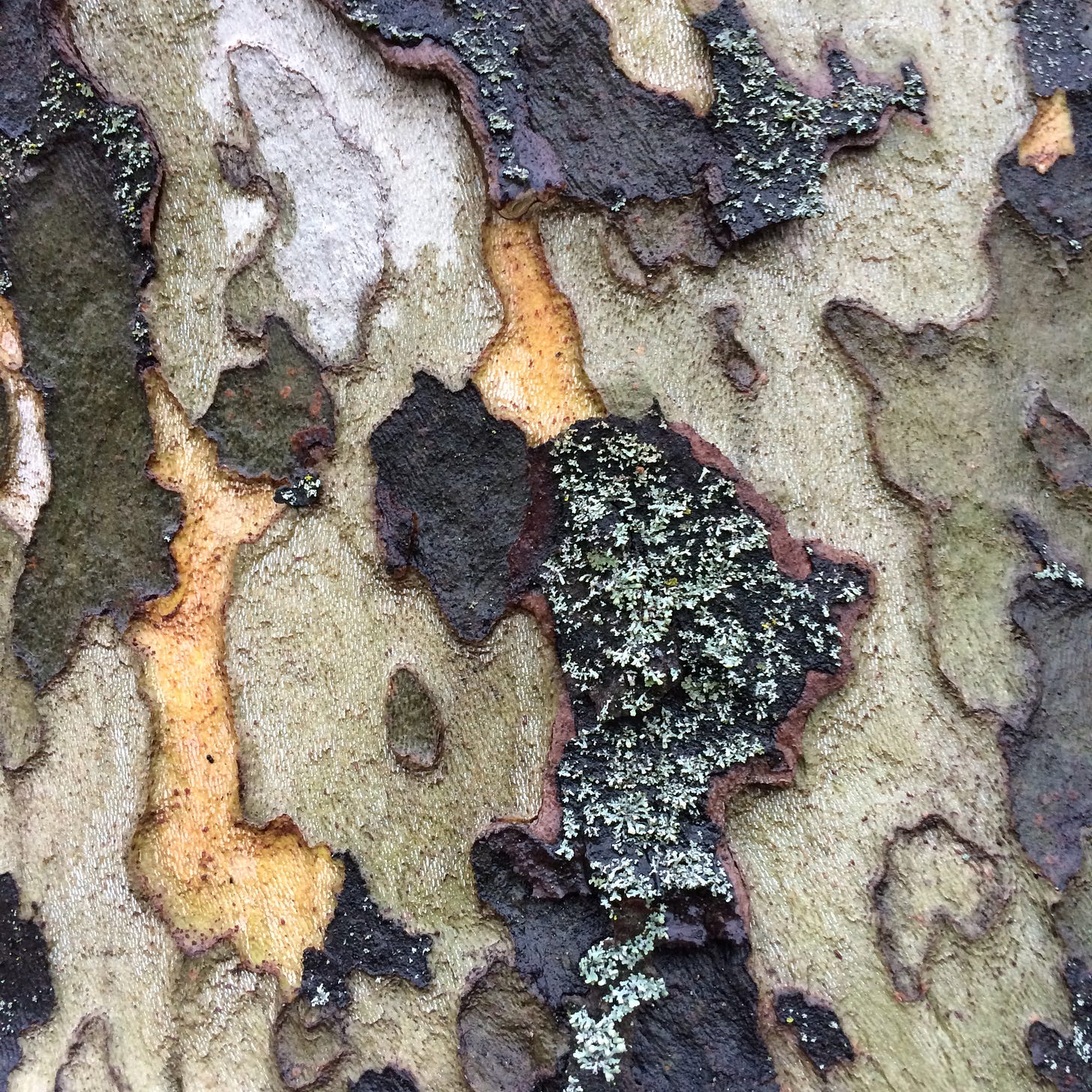
4. Bark with Personality
Tree bark is like a fingerprint, unique to each species. Napa Valley has some stellar specimens to admire. Keep an eye out for these three.
Cork oak: deeply ridged, with a spongy texture. Relatively soft if you knock on it
Sycamore: bark that flakes off in puzzle-like pieces
Crape myrtle: smooth and marbled; often described by landscape architects as the most beautiful bark.
Scavenger task: Create bark rubbings from three different trees. Compare the textures and patterns.
5. Fantastic Fungi
Fungi on a tree? That could mean trouble — or not. If you spot hockey-pucklike fungi (also known as conks or brackets), beware. These are active pathogens that attack and kill live wood. If you see fungus that looks like roof shingles or fans growing on the trunk, it’s usually a sign the tree is already in decline and these mushrooms are just the cleanup crew.
Scavenger task: Can you find both kinds of fungi? Label them “helper” or “attacker” in your notes.
6. Sticky Leaves and Sooty Mold
Ever walk under a tree and notice that your shoes are sticky or that the sidewalk is blackened? The sticky stuff is probably honeydew, a sugary waste product from aphids, scale insects or whiteflies. The black coating is a harmless but unattractive fungus called sooty mold that feeds on the honeydew.
Scavenger task: Find a sticky tree. What kind of insects are attacking it? Can you spot any sooty mold?
7. Beware the Gutter Tree
Cracks in sidewalks or asphalt are often seen sprouting ferny leafed Ailanthus altissima (aka tree of heaven). But don’t be fooled by that name. These trees are no angels with their invasive habit and fast-growing stands that damage infrastructure and bully native species. Their leaves smell … odd. Crush a leaf and sniff: If it smells like rancid peanut butter, you’ve found your culprit.
Scavenger task: Find a tree of heaven growing in a cement or asphalt crack. Slowly turn in a circle and count how many more you can see from where you stand.
8. Wide, Not Deep, Roots
A common myth is that deep roots equal a strong tree. In reality, most tree root systems are usually at least as wide as the tree is tall, but not very deep. A wide root spread is what gives a tree stability.
Scavenger task: Find a stick the length of your arm and hold it at the base. Raise your arm parallel to the ground and hold the stick perpendicular. Start backing away from a tall tree and stop when, from your perspective, the stick is obscuring the entirety of the tree. A healthy tree’s roots will likely stretch out to where you are standing.
9. Is It a Tree or a Shrub?
Some lumpy-trunked trees might not be trees at all. Citrus, pomegranates and crape myrtles are all naturally multitrunked shrubs commonly trained to grow with a single trunk. Many trees that are under 25 feet tall fall into this category.
Scavenger Task: Look at the base of tree trunks and see if you can identify where branches or trunks were removed in the past.
Bonus: Check the Napa City Tree List
Planning to plant a street tree in Napa? The city has a list of approved species for planting in sidewalk strips and under power lines. Use this list to identify mystery trees — and maybe even help your neighbors choose the right one to plant.
Scavenger task: Pick one City of Napa-approved tree species and see if you can find it growing nearby.
Napa Valley’s trees are not just beautiful. They’re alive with stories, clues and fascinating details waiting to be discovered. So get outside, bring your curiosity and turn your neighborhood into a living, breathing treasure map.
Events
Workshop: Join UC Master Gardeners of Napa County for a workshop on “Summer Rose Care” on Saturday, June 14, from 10 to 11:30 a.m. via Zoom. The UC Master Gardener Rose Team will provide research-based answers on how and why to prune your roses, what to do about disease and pesky bugs, when to fertilize, and many more summer rose-care issues. Attendees can then join a hands-on workshop at Fuller Park Rose Garden in Napa on June 21 to practice what they’ve learned. Register to receive the Zoom link.
Library Talk: UC Master Gardeners of Napa County with Napa Public Library will host a free talk on “A Wonderland of Aloes” on Thursday, July 3, from 7 to 8 p.m. via Zoom. Learn how to repair, upgrade or plan new irrigation for your lawn and garden. Note that the meeting will not allow entry after 7:15 pm. Register to receive the Zoom link.
Help Desk: The Master Gardener Help Desk is available to answer your garden questions on Mondays and Fridays from 10 a.m. until 1 p.m. at the University of California Cooperative Extension Office, 1710 Soscol Ave., Suite 4, Napa. Or send your questions to mastergardeners@countyofnapa.org. Include your name, address, phone number and a brief description of the problem. For best results attach a photo.
—
Aileen Carroll is a UC Master Gardener of Napa County.





